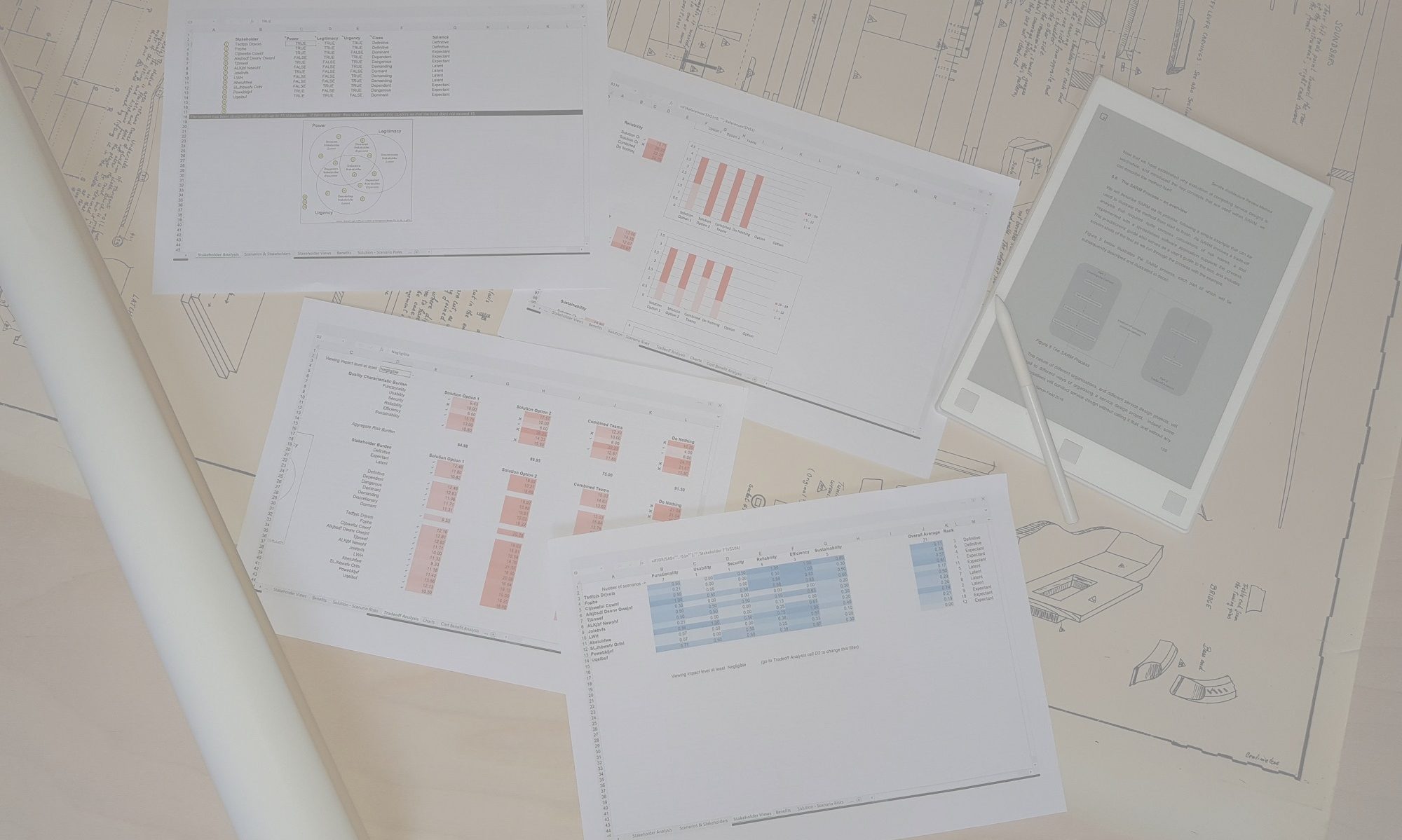Earlier versions of SARM imposed a stakeholder analysis model on the process. It enabled the stakeholder perspectives to be viewed not only from their individual perspectives, but abstracted to the higher levels of the classes of stakeholder to which they belonged. The model adopted was first proposed by Mitchell, Agle and Wood (see below for details). It is a powerful model, providing some valuable insights beyond the simpler “Influence / Interest” matrix more commonly used.
We dropped the use of the model from the SARM process because there is little benefit in abstraction from only 15 stakeholders to 7 stakeholder classes. It is just as easy to look across 15 perspectives as it is 7. Removing the model from SARM simplifies it, and leaves users free to adopt whatever analysis model they like. But we strongly recommend that, whatever approach you adopt to analyse your stakeholders, you record the most significantly affected ones in the Context worksheet in SARM so that you can see the analysis through their eyes.
If you’re new to stakeholder analysis, the following guide might be of interest.
This activity should be conducted very early in the project. It is good project practice for project leaders to articulate and understand their stakeholders. The activity can be accomplished in a fairly short meeting (up to an hour) between the project sponsor and lead architect / designer. Start with a whiteboard and brainstorm all stakeholders or stakeholder groups that you can think of. It might help to divide this between internal stakeholders (those within your organisation) and external ones. A widely accepted definition of a stakeholder is:
Any group of individual who can affect or is affected by the project or solution.
Adapted from R. Edward Freeman, “Strategic Management”, 1982
I’ve seen projects working with fifty or more stakeholder groups, but if your initial brainstorm identifies hundreds, you may want to reduce them to a more manageable number. Remember that for SARM, you’ll be focusing on just 15 or fewer. So if you think you have too many, you can cluster these into groups of stakeholders that will take a similar view of / attitude towards, the proposed system or service. Once you have a manageable number, you now need to answer three questions for each one:
Do they have power? (i.e. can they make the project do something it would otherwise not have done?) This is similar to the “influence” attribute used in other models.
Do they have legitimacy? (are they on the same page as the project team, or do they have ‘their own agenda’?)
Do they have urgency? (are they really keen to see this new solution, or do they not really care?) This is similar to the “interest” attribute used in other models.

This now allows you to classify each stakeholder into one of seven classes. These were devised by Ronald K. Mitchell, Bradley R. Agle and Donna J. Wood, and first published in the Academy of Management Review, Volume 2, Issue No. 4 in 1997 in a paper entitled “Toward a theory of stakeholder identification and salience: defining the principle of who and what really counts”.
You might find this information sheet to be of use in helping all participants in this activity have a common understanding of stakeholder analysis.

